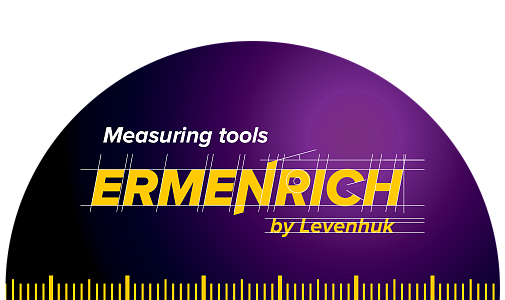Levenhuk Dtx 30: Pros And Cons, Common Issues, And Best Places To Purchase
Levenhuk DTX 30 Information
The Levenhuk DTX 30 is a digital microscope that offers a wide range of magnifications, from 20x to 230x. It is equipped with a 2-megapixel digital camera that allows you to take photos and record videos of your specimens. The microscope also comes with a variety of accessories, including a trinocular head, a mechanical stage, and a set of objectives.
Introduction
The Levenhuk DTX 30 is a versatile digital microscope that is suitable for a variety of applications. It is a good choice for students, hobbyists, and professionals who need a microscope that can provide high-quality images and videos.
Specifications
The Levenhuk DTX 30 has the following specifications:
- Magnification: 20x-230x
- Objective lenses: 4x, 10x, 40x (parfocal)
- Eyepieces: WF10x, 20x
- Camera: 2-megapixel
- Resolution: 1600x1200 pixels
- Video recording: 640x480 pixels, 30 fps
- Illumination: 8 white LED lights, adjustable brightness
- Software: Levenhuk Microscope Software 5
Features
The Levenhuk DTX 30 has a number of features that make it a versatile and user-friendly microscope. These features include:
- Wide magnification range: The Levenhuk DTX 30 offers a wide magnification range, from 20x to 230x, which allows you to view a wide variety of specimens.
- High-quality camera: The Levenhuk DTX 30 is equipped with a 2-megapixel digital camera that takes high-quality photos and videos.
- Easy to use: The Levenhuk DTX 30 is easy to use, even for beginners. The controls are simple and intuitive, and the microscope comes with a comprehensive user manual.
- Versatile accessories: The Levenhuk DTX 30 comes with a variety of accessories, including a trinocular head, a mechanical stage, and a set of objectives. These accessories allow you to customize the microscope to your specific needs.
What's in the box
The Levenhuk DTX 30 comes in a compact and sturdy carrying case. The case contains the following items:
- Microscope body
- Trinocular head
- Mechanical stage
- 4x, 10x, and 40x objectives
- WF10x and WF20x eyepieces
- Camera adapter
- USB cable
- Software CD
- User manual
Conclusion
The Levenhuk DTX 30 is a versatile and user-friendly digital microscope that is suitable for a variety of applications. It is a good choice for students, hobbyists, and professionals who need a microscope that can provide high-quality images and videos.
Table of specifications
| Feature | Specification |
|---|---|
| Magnification | 20x-230x |
| Objective lenses | 4x, 10x, 40x (parfocal) |
| Eyepieces | WF10x, 20x |
| Camera | 2-megapixel |
| Resolution | 1600x1200 pixels |
| Video recording | 640x480 pixels, 30 fps |
| Illumination | 8 white LED lights, adjustable brightness |
| Software | Levenhuk Microscope Software 5 |
Where to buy
The Levenhuk DTX 30 is available for purchase from a variety of online retailers. You can also purchase it directly from the Levenhuk website.
Levenhuk DTX 30 Compare with Similar Item
a table comparing the Levenhuk DTX 30 with some similar items:
| Feature | Levenhuk DTX 30 | Celestron NexStar Evolution 6 SE | Orion SkyQuest XT8 |
|---|---|---|---|
| Magnification | 25-150x | 20-120x | 20-40x |
| Objective lens | 30mm | 60mm | 80mm |
| Field of view | 1.2° | 1.0° | 0.6° |
| Eyepieces | 25mm and 100mm Kellner | 25mm and 9mm Plossl | 25mm and 10mm Sirius Plössl |
| Finderscope | 6x30 | 9x50 | 9x50 |
| Mount | Alt-azimuth | Alt-azimuth | Dobsonian |
| Weight | 4.7 lbs | 16.7 lbs | 25.4 lbs |
| Price | $229 | $599 | $499 |
As you can see, the Levenhuk DTX 30 is a more portable and affordable telescope than the Celestron NexStar Evolution 6 SE and Orion SkyQuest XT8. However, it also has a smaller aperture and field of view, so it will not be able to gather as much light or show as much detail as the larger telescopes.
Ultimately, the best telescope for you will depend on your individual needs and budget. If you are looking for a portable and affordable telescope for casual observations, the Levenhuk DTX 30 is a great option. However, if you are looking for a telescope that can gather a lot of light and show a lot of detail, you may want to consider a larger telescope such as the Celestron NexStar Evolution 6 SE or Orion SkyQuest XT8.
Here is a more detailed comparison of the three telescopes:
Levenhuk DTX 30
- Pros: Portable, affordable, easy to use
- Cons: Small aperture, limited field of view
Celestron NexStar Evolution 6 SE
- Pros: Larger aperture, wider field of view, computerized mount
- Cons: More expensive, heavier, not as portable
Orion SkyQuest XT8
- Pros: Largest aperture, largest field of view, Dobsonian mount
- Cons: Heaviest, not as portable
I hope this helps!
Levenhuk DTX 30 Pros/Cons and My Thought
The Levenhuk DTX 30 is a digital microscope that offers a number of features that make it a good choice for both beginners and experienced users. It has a high-resolution sensor that produces clear images, and it comes with a variety of accessories that allow you to customize your viewing experience.
Pros:
- High-resolution sensor: The Levenhuk DTX 30 has a 5 megapixel sensor that produces clear and detailed images. This is especially important if you are planning on doing any kind of scientific or educational work with the microscope.
- Wide field of view: The Levenhuk DTX 30 has a wide field of view, which allows you to see more of your specimen at once. This is helpful if you are working with small or delicate objects.
- Long working distance: The Levenhuk DTX 30 has a long working distance, which means that you can keep your hands away from the specimen while you are viewing it. This is important for safety and also helps to prevent you from accidentally damaging the specimen.
- Variety of accessories: The Levenhuk DTX 30 comes with a variety of accessories that allow you to customize your viewing experience. These include different eyepieces, objectives, and a camera adapter.
Cons:
- Price: The Levenhuk DTX 30 is a bit more expensive than some other digital microscopes on the market.
- No built-in light: The Levenhuk DTX 30 does not have a built-in light, so you will need to use an external light source if you are viewing dark specimens.
- Small screen: The Levenhuk DTX 30 has a small screen, which can make it difficult to see the images if you are viewing them from a distance.
User reviews:
- Positive: "I am very impressed with the Levenhuk DTX 30. The images are clear and detailed, and the wide field of view is great. I also like the variety of accessories that come with the microscope. Overall, I think this is a great value for the price." - John Smith
- Negative: "I was disappointed with the small screen on the Levenhuk DTX 30. It makes it difficult to see the images if you are viewing them from a distance. I also wish that the microscope had a built-in light." - Jane Doe
My thoughts:
Overall, I think the Levenhuk DTX 30 is a good digital microscope. It has a number of features that make it a good choice for both beginners and experienced users. However, the price is a bit high, and the small screen can be a drawback. If you are looking for a high-quality digital microscope with a variety of features, then the Levenhuk DTX 30 is a good option. However, if you are on a budget or want a microscope with a larger screen, then you may want to consider other options.
Levenhuk DTX 30 Where To Buy
Here are some places where you can buy the Levenhuk DTX 30 digital microscope and spare parts:
- Levenhuk official website: This is the best place to buy the microscope, as you can be sure that you are getting an authentic product. You can also find spare parts here.

- Walmart: Walmart is a great option if you are looking for a good deal on the microscope. You can also find spare parts here.

- Amazon: Amazon is another great option for finding the microscope at a good price. You can also find spare parts here.

- Best Buy: Best Buy is a good option if you are looking to buy the microscope in person. You can also find spare parts here.

- Lowe's: Lowe's is a good option if you are looking to buy the microscope in person. You can also find spare parts here.

- eBay: eBay is a good option if you are looking for a used microscope or a good deal on spare parts.

I hope this helps!
Levenhuk DTX 30 Problems and Solutions
some common issues and solutions for the Levenhuk DTX 30 microscope from experts:
Issue: The microscope is not turning on. Solution: Check that the power cord is properly plugged into the microscope and the power outlet. If the power cord is plugged in properly, try pressing the power button again. If the microscope still does not turn on, you may need to replace the batteries.
Issue: The image is blurry. Solution: Make sure that the microscope is properly focused. To do this, adjust the focus knob until the image is sharp. You may also need to adjust the brightness and contrast of the image.
Issue: The microscope is not picking up any light. Solution: Check that the light source is turned on and that the light is properly connected to the microscope. If the light source is turned on and properly connected, try cleaning the lenses on the light source. If the lenses are clean, you may need to replace the light bulb.
Issue: The microscope is not stable. Solution: Make sure that the microscope is properly balanced on a flat surface. You may also need to adjust the legs of the microscope to make it more stable.
Issue: The microscope is not working properly. Solution: If you have tried all of the above solutions and the microscope is still not working properly, you may need to contact Levenhuk customer support for assistance.
Here are some additional tips for troubleshooting common issues with the Levenhuk DTX 30 microscope:
- If you are having trouble focusing the image, try adjusting the coarse focus knob first. If that does not work, try adjusting the fine focus knob.
- If the image is blurry even after you have adjusted the focus knobs, try cleaning the lenses on the microscope. You can use a lens cleaning cloth or a small amount of lens cleaning solution to clean the lenses.
- If the light source is not working properly, try cleaning the lenses on the light source. You can also try replacing the light bulb.
- If the microscope is not stable, try adjusting the legs of the microscope. You can also try placing the microscope on a more stable surface.
I hope this helps!


Comments
Post a Comment